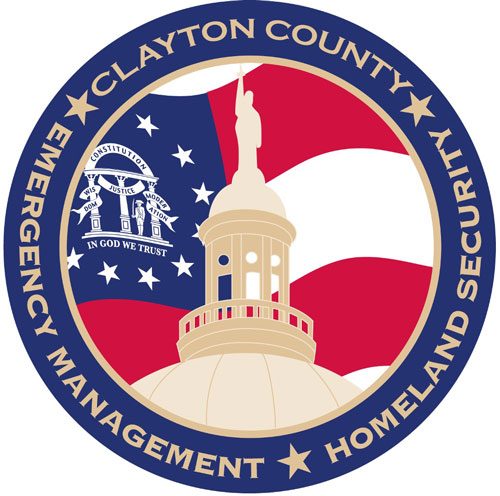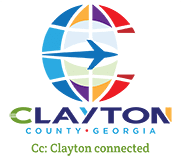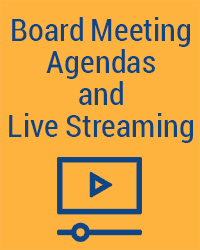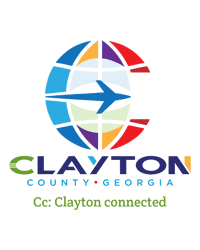
Chief Resilience Officer/Director of Emergency Management
David Vazquez
Phone: (770) 473-5847
1590 Adamson Parkway, Suite 370 Morrow, GA 30260
Operating Hours:
Monday – Friday:
8:00 a.m. – 5:00 p.m.

Make a Plan

Your family may not be together when a disaster strikes so it is important to plan in advance: how you will get to a safe place; how you will contact one another; how you will get back together; and what you will do in different situations. Read more about Family Communication during an emergency. Ready.gov has made it simple for you to make a family emergency plan. Visit the Family Emergency Planning pages with the Family Communication Plan Fillable Form. Fill out the sections before printing it or emailing it to your family and friends. You should also inquire about emergency plans at places where your family spends time: work, daycare and school, faith organizations, sports events and commuting. If no plans exist, consider volunteering to help create one. Talk to community leaders, your colleagues, neighbors and members of faith or civic organizations about how you can work together in the event of an emergency. You will be better prepared to safely reunite your family and loved ones during an emergency if you think ahead and communicate with others in advance.
Loved Ones
Plan for Your Risks
There are actions that should be taken before, during and after an event that are unique to each hazard. Identify the hazards that have happened or could happen in your area and plan for the unique actions for each. Local Emergency management offices can help identify the hazards in your area and outline the local plans and recommendations for each. Share the hazard-specific information with family members and include pertinent materials in your family disaster plan. Find out from local government emergency management how you will be notified for each kind of disasters, both natural and man-made. You should also inquire about alert and warning systems for workplace, schools and other locations. Methods of getting your attention vary from community to community. One common method is to broadcast via emergency radio and TV broadcasts. You might hear a special siren, or get a telephone call, or in rare circumstances, volunteers and emergency workers may go door-to-door. Get more information about Warning Systems & Signals. Depending upon the nature of the emergency and your circumstances, one of the first important decisions is whether to stay where you are or evacuate. You should understand and plan for both possibilities. Learn more about Evacuation & Sheltering In Place. Learn more about specific hazard types, including natural disasters, technological and accidental hazards, and terrorist hazards.
Plan to Protect Loved Ones
Infants and Young Children
For Baby:
- Formula
- Diapers
- Bottles
- Powdered milk
- Medications
- Moist towelettes
- Diaper rash ointment
Try to make emergency planning fun for young children. Gather your family members together for a quick family meeting, maybe over a pizza or before watching your favorite movie.
Seniors
Seniors should keep specialized items ready, including extra wheelchair batteries, oxygen, catheters, medication, food for service animals and any other items you might need. Keep a list of the type and model numbers of the medical devices you require. Be sure to make provisions for medications that require refrigeration. Make arrangements for any assistance to get to a shelter.
Access and Functional Needs
As you prepare, consider all the strategies, services, devices, tools and techniques you use to live with a disability on a daily basis. Keep in mind that you may need medications, durable medical equipment, consumable medical supplies, your service animal, assistive technology, communications tools, disability service providers, accessible housing, transportation and health-related items.
- Those who are deaf or hard of hearing may need to make special arrangements to receive emergency warnings.
- Single working parents and those with limited English proficiency may need help planning for disasters and emergencies. Community, faith-based and cultural groups may be able to help keep people informed.
- People without vehicles may need to make arrangements for transportation.
- People with special dietary needs should take precautions to have an adequate emergency food supply.
Pets
If you are like millions of animal owners nationwide, your pet is an important member of your household. Unfortunately, animals are also affected by disaster.
Use the Pet Owners Brochure and the Pet Instructional Video below to help you create an emergency plan and kit for your pet.
Plan for pet needs during a disaster by:
- Identifying shelter. For public health reasons, many emergency shelters cannot accept pets. Find out which motels and hotels in the area you plan to evacuate to allow pets well in advance of needing them. There are also a number of guides that list hotels/motels that permit pets and could serve as a starting point. Include your local animal shelter's number in your list of emergency numbers. They might be able to provide information concerning pets during a disaster.
- Take pet food, bottled water, medications, veterinary records, cat litter/pan, manual can opener, food dishes, first aid kit and other supplies with you in case they're not available later. Before you find yourself in an emergency situation, consider packing a "pet survival" kit which could be easily deployed if disaster hits.
- Make sure identification tags are up-to-date and securely fastened to your pet's collar. If possible, attach the address and/or phone number of your evacuation site. If your pet gets lost, his tag is his ticket home.
- Make sure you have a current photo of your pet for identification purposes.
- Make sure you have a secure pet carrier, leash or harness for your pet so that if he panics, he can't escape.
Plan for Locations
While there are warnings for many types of potential disasters, many emergencies and disasters occur without any warning. Since you can’t predict where you will be for disasters, it is important to have plans and supplies for the locations you and your household go to regularly. Planning ahead will ensure that you and your household will know what to do and have the supplies you need to be safe wherever you are. Individuals and households should consider the locations they frequent; find out what plans are available for these locations, and customize their personal and household plans based on what household members would do if an emergency occurred while they were at that location. Examples of locations to consider and plan for include:
- Home
- Workplace
- Vehicles
- Regular methods of transportation such as trains, urban commuter transit
- School
- Places of Worship
- Sports arenas and playing fields
- Entertainment locations such as theatres
- Shopping areas such as malls and retail centers
- Tourist and travel locations such as hotels
Developing plans for different locations will require getting key information about the organization or building managers’ plans for the locations. In some cases if plans are not available, this may involve working with the building manager or other members of the organization to develop or expand plans. Information that should be considered includes:
- How you and other occupants will get local alert or warnings while you are there
- Building location alarm or alert systems
- Building occupant evacuation plans including alternate exits
- Building or organization plans for sheltering occupants in an emergency
- Key Supplies you/household members and others would need for temporary sheltering
Planning should also consider how the type of structure or the environments around the structure or location may impact alerts and warnings, shelter and evacuation, and the need for supplies. Examples of considerations for the type of structure or the environment around the location include:
- Single story vs multi-story or high rise buildings have different types of alarm systems, shelter and evacuation considerations.
- Urban and rural locations may have different local assumptions and plans for evacuation if large areas are impacted.
- Buildings like schools, sports arenas, and malls may have different plans for evacuation and shelter depending on the specific building structure and likely safe methods for evacuation or safe locations for shelter for different types of emergencies e.g. tornadoes
- Outdoor locations likes sports fields or golf courses need specific plans for rapid short-term shelter e.g. for thunderstorms and lightening or tornadoes
- Geography may be critical for some hazards, e.g. if the area is low and vulnerable to flash flooding
- Mobile homes, modular structures and other buildings not attached to permanent foundations require planning for evacuation and alternate shelter locations
SCHOOL AND WORKPLACE
Ready Responder
Be a Ready Responder – Don’t Delay, Prepare Today

The Ready Responder Program was created specifically for you, the emergency responder. Your role as a public safety first responders is critical in emergency operations, whether preserving lives, protecting property, or providing other essential services. When plans are place to support your family, you can turn your full attention to the life-saving missions that support the community. Pledge to Be a Ready Responder by taking these steps: GET A KIT – MAKE A PLAN – BE INFORMED CONSIDERATIONS FOR EMERGENCY RESPONDERS:
- You may have special concerns as a single parent, pet owner, or care provider for a dependent loved one.
- Lack of preparedness at home will impact your ability to do your job effectively and safely. Your family members will likely have to survive on their own without you to make important decisions.
- Preparing with your family ahead of time will reduce stress and uncertainty on all of you in the event of an emergency.
- Working with your neighbors, relatives, and friends will improve your ability to care for your loved ones following a disaster.
- Families where both parents are responders have special circumstances.
- You will need to have a family support network that can care for your children, pets, property, dependents or those with special needs, and should notify their supervisor of their family situation.
- Communications with your loved ones may be difficult.
- You may be separated when an emergency occurs and may be unable to care for your family.
- You may be working in very stressful conditions for extended amounts of time.
- You may be required to work extra shifts without knowing where or how your family is.
- You may not know the condition of your home or other property.
Campus Ready
In times of disasters, colleges and universities serve as key emergency management partners to federal, state, local, tribal, territory and private sector organizations. Natural, technological, and health hazards can all affect daily campus operations. Colleges and universities are encouraged to review, update and exercise their emergency plans several times per year.
Emergency Planning
- Action Guide for Emergency Management at Institutions of Higher Education
- Addressing Emergencies on Campus Guidance
- Department of Education Guide for Developing High-Quality School Emergency Operations Plans
- Individuals with Access and Functional Needs
- Emergency plan guide for people with disabilities
Communications Plans
Business Continuity Planning
Campus Fire Safety
Cyber and Mobile Safety
Pandemic Flu
Emergency Management Courses for Campuses
- Emergency Planning for Higher Education Training
- Community Emergency Response Team Training
- FEMA Corps
- IS-907 Active Shooter: What You Can Do
- IS-29 Public Information Officer Awareness
- IS-42 – Social Media in Emergency Management
- IS-100.b - Introduction to Incident Command System
- IS-235.b Emergency Planning
- IS-546.12 Continuity of Operations Awareness Course
Campus C.E.R.T. Team
The Community Emergency Response Team (CERT) Program educates and trains faculty, staff and students about disaster preparedness for hazards that may impact their area and trains them in basic disaster response skills, such as fire safety, light search and rescue, team organization, and disaster medical operations.CAMPUS CERT RESOURCES:
About EMA
Preparedness
Training
LEPC




 Click Clayton
Click Clayton








